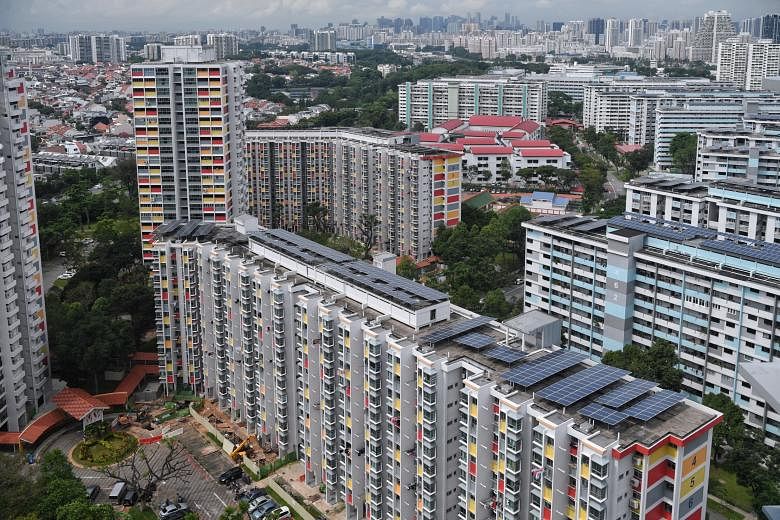SINGAPORE - Singapore is on a quest to generate more clean energy, reduce carbon emissions and, in turn, reduce the effect of climate change.
The Housing Board is leading the charge by aggregating public sector demand for the installation of solar panels across HDB blocks and government sites through the SolarNova programme.
On Friday (Feb 25), HDB said it is on track to meet the target set in 2019 to install a total solar capacity of 540 megawatt-peak (MWp) by 2030, which could potentially generate enough green energy to power the equivalent of 135,000 four-room HDB flats.
It contributes towards the national solar targets of 1.5 gigawatt-peak (GWp) by 2025, and 2 GWp by 2030 as set out under the Singapore Green Plan.
These are the key milestones in HDB's solar energy journey:
2008: The first solar test beds are conducted at two precincts in Serangoon and Sembawang to gather technical knowledge on the installation of extensive solar systems on roof tops that were not originally designed for such installations.
2009: Wide-scale test beds of solar panels are launched in selected HDB precincts.
2010: Treelodge @ Punggol, HDB's first eco-precinct, is completed. The public housing project is the first in Singapore to have solar panels integrated in the design and construction stage.
2011: A solar leasing model is introduced, where private solar system developers will design, finance, install, operate and maintain the systems.
2014: The first zero-dollar solar leasing tender is awarded, with the full cost of the solar systems to be borne by system developers. This is because wider adoption of the solar leasing model enables economies of scale, so HDB no longer needs to fund the upfront cost to kick off the programme.
2015: HDB calls for the first consolidated tender under the SolarNova programe, which aims to aggregate solar demand across government agencies.
2017: All future HDB blocks are to be built with solar-ready roofs, where feasible, to enable more efficient solar panel installation, following a successful pilot at Punggol in 2016.
2018: An agreement is signed with Million Lighting to develop a 100 kilowatt-peak (KWp) floating solar system in Tengeh Reservoir in Tuas using HDB's floating modular system. Two months later, another agreement is signed with ISO-Landscape to study the feasibility of using the floating modular system for coastal marine conditions to address the harsh environmental conditions at sea.
2019: A new target is set to install a solar capacity of 540 MWp by 2030, after having achieved HDB's earlier solar target of 220 MWp.


